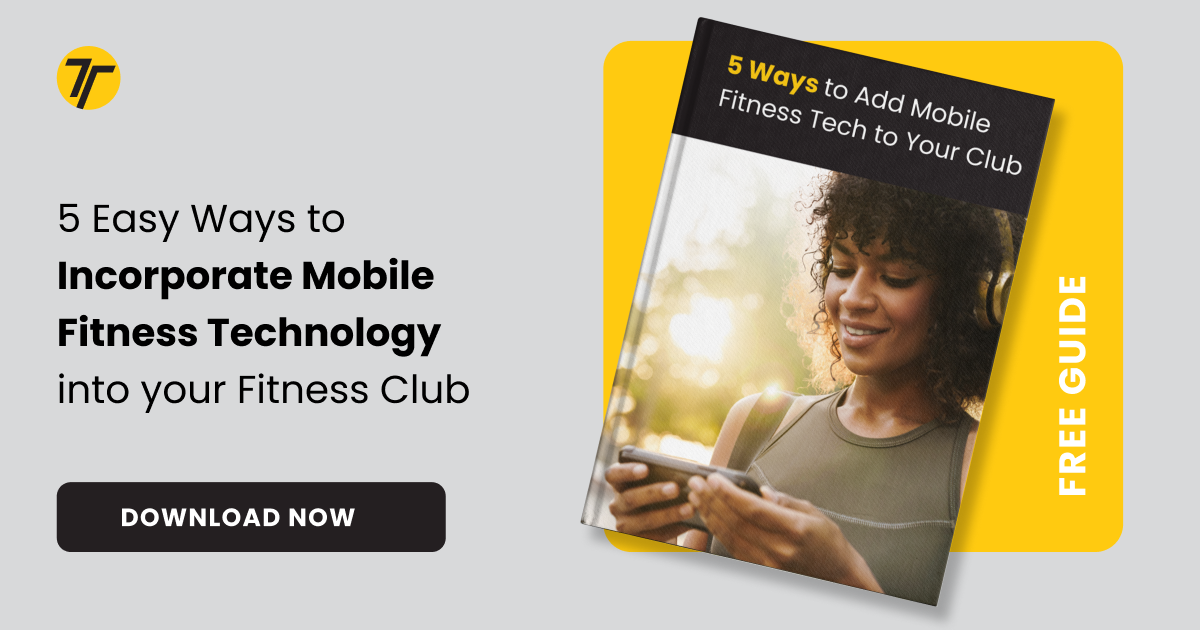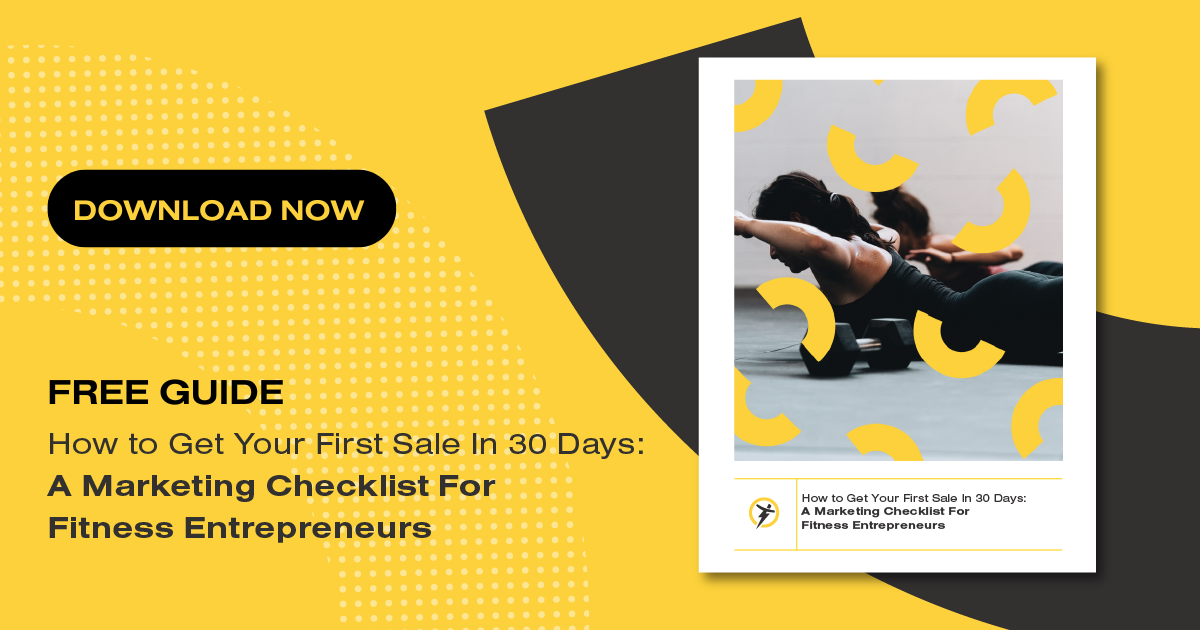Are you ready to kickstart the new year with 7 proven fitness center marketing strategies to take your business to the next level? We’re breaking down everything you need to know in order to have your best year yet!
What’s a marketing strategy?
First things first, “what exactly is a marketing strategy anyway?” Essentially, it’s a plan for reaching and attracting customers within your target market who you’ll sell your fitness services to (these people are known as leads).
A marketing strategy involves researching your target market, identifying their needs and deciding how you’ll reach them. Additionally, a marketing strategy typically includes a plan for measuring the success of your marketing efforts. Finally, a marketing strategy aims to help you get the most out of your marketing budget and achieve your business goals.
Learn how to write a powerful 12-month marketing plan here.
What’s the difference between a marketing strategy and a marketing plan?
A marketing strategy is a high-level plan that outlines your overall goals for reaching and attracting customers. It includes a detailed analysis of your target market and the competition and identifies the unique value proposition that sets you apart in the fitness industry.
A marketing plan is more specific. It outlines the actions you’ll take to implement your marketing strategy. It includes specific tactics, like the types of advertising you’ll use. For example, the events you’ll attend, and the social media platforms you’ll use to reach your target market.
In short, a marketing strategy is an overall plan for reaching and attracting customers. Whereas a marketing plan is the specific actions you will take to implement that strategy.
 Kick off your online training business!
Kick off your online training business!
FREE GUIDE: Get 30 Clients in 30 Days
7 fitness center marketing strategies to set your business apart
Here is a list of 7 fitness center marketing strategies and tactics to use to help set your gym or studio apart from the crowd!
1. Create engaging social media content
Creating engaging social media content is one of the keys to attracting new leads to your business. Here are a few things to keep in mind.
Know your audience: understand who you’re trying to reach and the type of content they’re interested in. Knowing this will help you create content that resonates with them.
Be authentic: Don’t be afraid to use your voice and personality in your content. People respond to authenticity, and it helps you build a stronger connection with your followers.
Use visuals: As you know, social media is a visual medium. So, be sure to include eye-catching images or videos in your posts. Doing so will help make your content more engaging and memorable.
Keep it short: Social media users have short attention spans, so try to keep your posts short and to the point.
Use hashtags: Hashtags can help your content reach a wider audience. So, take the time to research relevant and popular fitness hashtags.
Engage with your followers: Don’t just post content. Instead, interact with your followers by responding to comments and answering questions. Doing so helps you build a community around your brand.
Mix it up: Feel free to mix things up and try new types of content. It helps you get your followers engaged and can help you learn what types of content are most successful for your brand.
By following these tips, you’ll create social media content that’s engaging, authentic, and effective at reaching your target audience.
2. Create a seamless online experience for clients and potential clients
These days, everyone is a digital expert, therefore, creating a seamless user experience is key to attracting and retaining clients. Here’s how:
Make your website easy to navigate: A well-designed website (with clear navigation and a clean layout) helps clients find what they’re looking for quickly and easily.
Optimize your website for mobile devices: With more and more people accessing the internet on their phones and tablets, it’s important to ensure your website is mobile-friendly.
Use high-quality images and videos: Visuals help make your website more engaging and help your brand stand out. Be sure to use high-quality images and videos that are relevant to your business.
Personalize the client experience: Use customer data and personalization techniques to create a more tailored online experience for your clients.
Make it easy for clients to purchase: Make sure your checkout process is easy and secure. Consider offering options like guest checkout or saved payment methods to make the process as smooth as possible.
Following these tips will create a seamless online experience that helps you build trust and loyalty with your customers.
3. Share customer success stories
Sharing customer success stories is a great marketing strategy. It serves as proof that your services work and are impactful to others. Here are a few different ways you can share customer success stories with your audience.
Share customer testimonials: Encourage happy clients to leave reviews or testimonials on your website or social media platforms. These can be very effective at motivating others to try your services.
Create case studies: Create detailed case studies that demonstrate how your services have helped specific clients achieve their long-term fitness goals. Your case studies can be shared on your website or social media platforms or used in other sales and marketing materials.
Share customer success stories on social media: Share success stories or quotes from happy clients on your social media channels. You can also use hashtags to make it easier for people to find and share these stories.
Use customer success stories in email marketing: Include customer success stories in your email marketing campaigns to highlight the benefits of the work you do with clients.
Share client success stories in person: If you have the opportunity to meet clients in person, don’t be afraid to share customer success stories with them. It’s a powerful way to demonstrate the value of your expertise.
By sharing customer success stories, you can help build trust and credibility with your audience and showcase the value of your fitness center or brand.
4. Use targeted ads
If you have the budget for it, targeted ads are an effective marketing strategy to reach more people in your target audience. Here are a few key steps to using targeted ads effectively.
Define your target audience: Identify the specific group of people you want to reach with your ads. For example, consider factors like age, location and interests.
Choose the right platforms: Choose the platforms that are most likely to reach your target audience. For example, if you’re targeting younger people, you’ll want to consider platforms like Instagram or Snapchat.
Create relevant and compelling ads: Create ads that are relevant to your target audience and that clearly communicate the value of your services. Use eye-catching visuals and a strong call to action to grab attention and encourage people to take action.
Use targeting options: Use the targeting options provided by the platform you’re using to reach the specific group of people you’ve identified as your target audience.
Measure and optimize: Use analytics tools to measure the performance of your ads and identify what is working and what isn’t. Then, use this information to optimize your ads and improve their effectiveness over time.
By following these steps, you can use targeted ads to reach the right people with the right message and increase the chances of achieving your marketing goals.
5. Create a successful referral program
Creating a successful referral program remains one of the best ways to spreading the word about your fitness business. Here’s a few steps to follow:
Define your goals: Ask yourself what you want to achieve through your referral program. For example, do you want to drive new customer acquisition, increase sales, or improve customer retention? By clearly defining your goals, you’ll design a referral program that’s aligned with your business objectives.
Identify your target audience: Know who you’re trying to reach. It can be your existing clients or a specific group of people you want to attract. Identifying your target audience will help you design a referral program that resonates with them.
Determine your reward: What will you offer to people who refer others to your business? For example, a discount, a free product or service, or another type of incentive. Choose a reward that is meaningful and valuable to your target audience.
Promote your referral program: Let your clients and potential referral partners know about your referral program. This could be through email marketing, social media, or other marketing channels. Be sure to clearly communicate the benefits of participating in the program.
Track and measure results: Use analytics tools to track the success of your referral program and identify areas for improvement. This will help you make adjustments to your program as needed to ensure it is effective at achieving your goals.
By following these steps, you can create a referral program that helps drive new business and grow your client base.
6. Re-target people in your audience
Re-targeting people in your audience is a highly effective marketing strategy. Here’s how you can implement this:
Set up a retargeting pixel: A retargeting pixel is a piece of code that you place on your website. It allows you to track visitors to your site and later show them targeted ads when they visit other websites. To set up a retargeting pixel, you’ll need to sign up for a retargeting platform and follow their instructions for installing the pixel on your site.
Create a retargeting campaign: Once you have your retargeting pixel set up, you can create a retargeting campaign on the platform you are using. This involves selecting your target audience (the people you want to show your ads to) and creating your ads.
Choose your ad placements: Decide where you want your ads to appear. This could be on specific websites or on specific types of websites (such as news sites or shopping sites). You can also choose to show your ads on specific devices (such as desktop computers or mobile phones).
Monitor and optimize your campaign: Use the analytics tools provided by your retargeting platform to track the performance of your campaign. Use this information to make adjustments to your targeting, ad creative, and budget to improve the effectiveness of your retargeting efforts.
By following these steps, you can use retargeting to show targeted ads to people who have already expressed interest in your fitness business. Doing so increases the chances of converting them into clients.
7. Use data driven marketing strategies
Using data driven marketing strategies is key to your success. Here’s how to set yourself up for success:
Identify your marketing goals: As yourself what you want to achieve through your marketing efforts.
Collect relevant data: Determine what data you need to collect in order to inform your marketing decisions. This could include data on your target audience, market trends, customer behavior, and more.
Analyze the data: Use tools and techniques such as Excel, Google Analytics, or a business intelligence platform to analyze the data and extract insights.
Use the insights to inform your marketing decisions: Based on the insights you gain from the data analysis, you can then make informed decisions about which marketing strategies to pursue.
Test and optimize your marketing efforts: Use A/B testing or other methods to test and refine your marketing efforts based on the data you collect.
By following these steps, you can use data to make more informed and effective marketing decisions.
Ready to get started? Trainerize can help you organize your marketing leads, manage your clients and grow your business.



